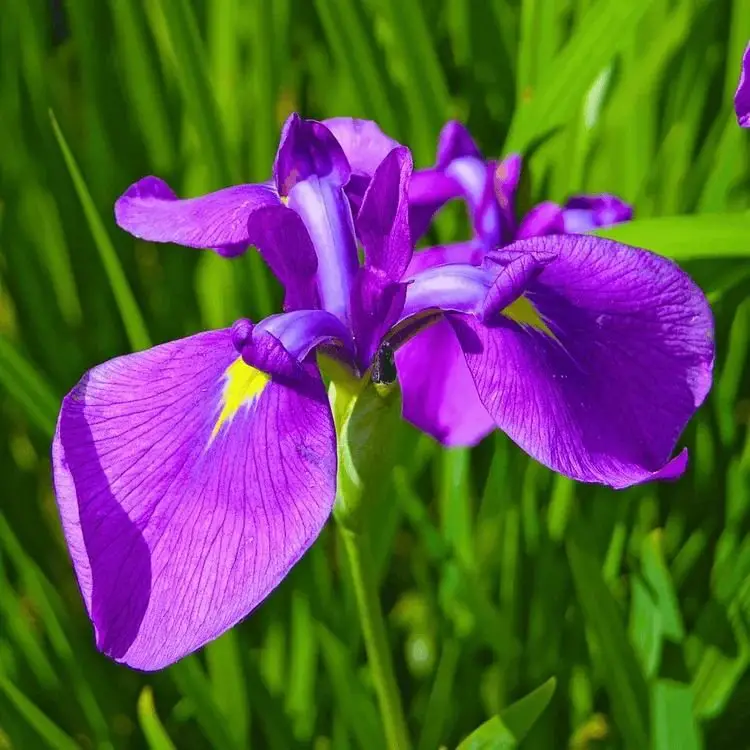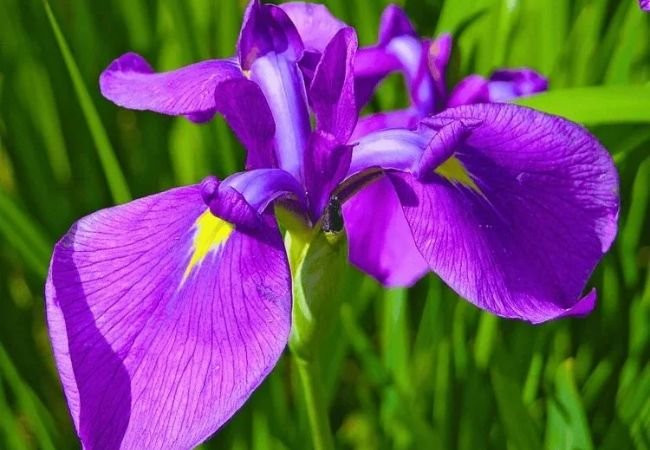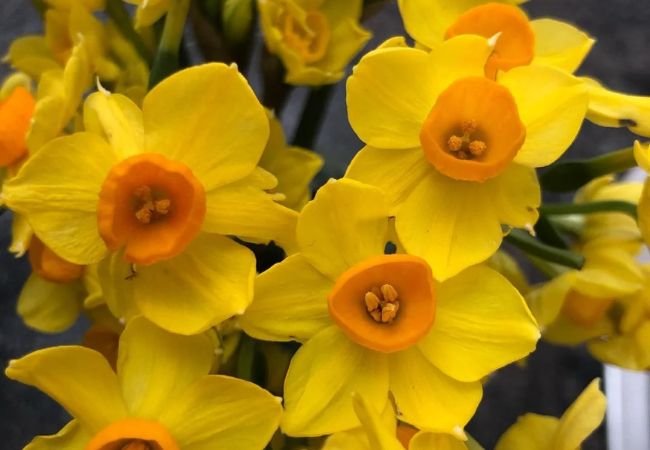Discover the beauty and diversity of Iris Flowers. Learn about their types, care tips and significance in gardens and culture. Perfect for flower enthusiasts and gardeners.
Iris flowers are some of the most beautiful and diverse plants in the garden world. With their striking colors and unique shapes, they’ve captured the hearts of gardeners and nature lovers for centuries. In this article, we’ll explore the fascinating world of iris flowers, their care and why they’re so special.
Certainly! Here’s a chart with information about Iris flowers:
| Aspect | Details |
|---|---|
| Botanical Name | Iris spp. |
| Common Name | Iris |
| Plant Type | Perennial herbaceous |
| Hardiness Zone | Zones 3-9 (depending on species) |
| Sun Exposure | Full sun to part shade |
| Soil Type | Well-drained, fertile soil |
| Watering Needs | Moderate; regular watering |
| Growth Habit | Clumping |
| Height/Spread | 6 inches to 4 feet tall / varies by species |
| Special Features | Showy flowers in various colors (blue, purple, yellow, white, etc.), sword-shaped foliage, blooms in spring and summer, attracts pollinators, used in gardens, borders and as cut flowers |
What are Iris Flowers?

Iris flowers are named after the Greek goddess of the rainbow, which makes sense when you see their wide range of colors. These flowers come in almost every color you can think of, from deep purples to bright yellows and even black! According to the United States National Arboretum, irises are among the most versatile and adaptable perennial plants.
There are over 300 types of iris flowers. They grow all over the world, from cold mountain areas to warm, dry places. Some common types are:
- Bearded Iris: These have fuzzy “beards” on their petals.
- Siberian Iris: Known for being tough and easy to grow.
- Japanese Iris: Love wet soil and have flat, wide flowers.
The United States Department of Agriculture provides a comprehensive plant profile for the Iris genus, which can be helpful for understanding their botanical characteristics.
How to Grow Iris Flowers
Growing iris flowers can be fun and rewarding. Here are some tips to help you:
- Sunlight: Most iris flowers like full sun, which means at least 6 hours of direct sunlight each day.
- Soil: They prefer well-drained soil. If your soil holds too much water, mix in some sand to help it drain better. The University of Minnesota Extension offers detailed guidance on soil preparation for irises.
- Planting: The best time to plant iris is in late summer or early fall. This gives them time to grow roots before winter.
- Water: Water them regularly, especially when they’re first planted. But be careful not to overwater – iris don’t like soggy soil.
- Fertilizer: Use a balanced fertilizer in early spring when new growth starts. The Clemson Cooperative Extension provides information on proper fertilization techniques for irises.
Caring for Iris Flowers
To keep your iris flowers healthy and blooming, follow these care tips:
- Divide them every 3-5 years. This means digging up the plants and separating them into smaller pieces to replant. The University of Illinois Extension offers a guide on dividing perennials, including irises.
- Cut off dead flowers to encourage more blooms.
- In fall, cut back the leaves to about 6 inches tall. This helps prevent diseases.
- Watch out for pests like iris borers. If you see any, remove them by hand or use an organic pesticide. The University of Maryland Extension provides information on managing iris borers.
The Importance of Iris Flowers
Iris flowers aren’t just pretty – they’re also important in many ways:
- For Gardens: They add color and variety to gardens. Their different heights and bloom times make them great for designing garden layouts.
- For Wildlife: Bees and butterflies love iris flowers. By planting them, you’re helping these important insects. The U.S. Forest Service offers information on gardening for pollinators.
- In Culture: Iris flowers have been important in art and literature for a long time. They’re even the national flower of France!
- For Medicine: Some types of iris have been used in traditional medicine for things like skin problems and digestion issues. The National Center for Complementary and Integrative Health provides information on herbal medicine, though it’s important to consult with a healthcare professional before using any plant for medicinal purposes.
Interesting Facts About Iris Flowers
Did you know?
- The fleur-de-lis, a famous symbol in heraldry, is based on the iris flower.
- Iris flowers can live for many years with proper care.
- Some iris flowers smell nice, while others have no scent at all.
- The iris flower has inspired many famous paintings, including works by Vincent van Gogh. The National Gallery of Art features some artwork inspired by irises.
Iris flowers are more than just pretty faces in the garden. They’re diverse, historically significant, and important for our environment. Whether you’re a seasoned gardener or just starting out, growing iris flowers can be a rewarding experience. With their rainbow of colors and relatively easy care, iris flowers are a great addition to any garden or landscape.
For more information on iris conservation efforts, check out the United States Botanic Garden’s resources on native iris species.
Remember, every garden is unique, so don’t be afraid to experiment and find what works best for you and your iris flowers. Happy gardening!
For more gardening tips and plant care guides, visit usagardenhub.com.






